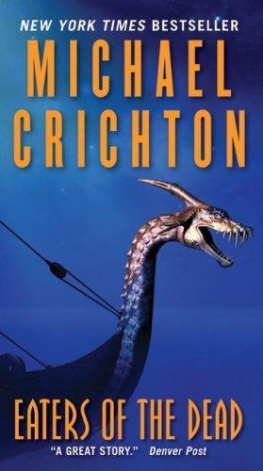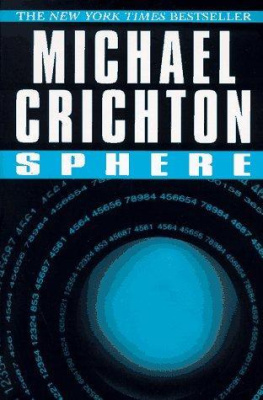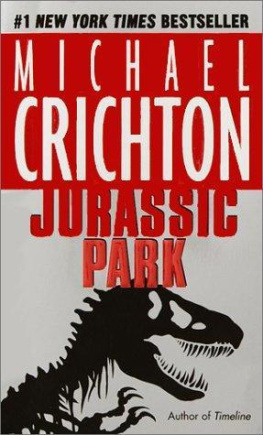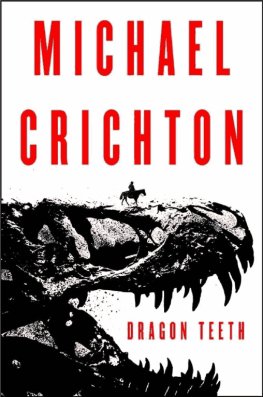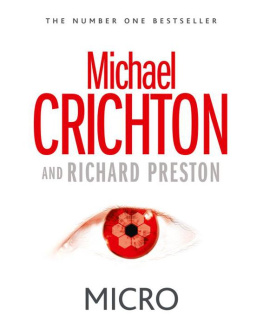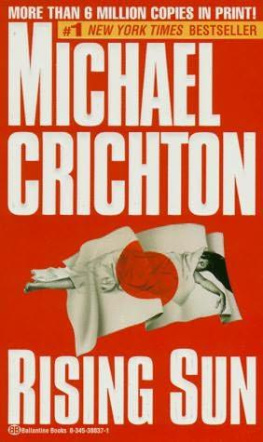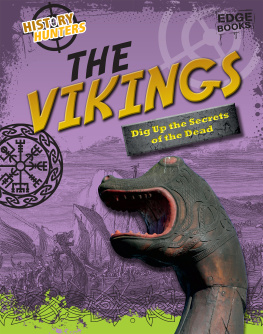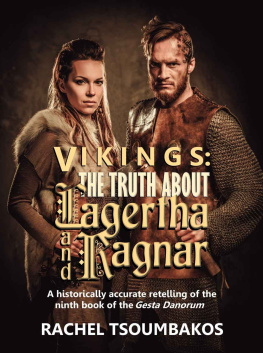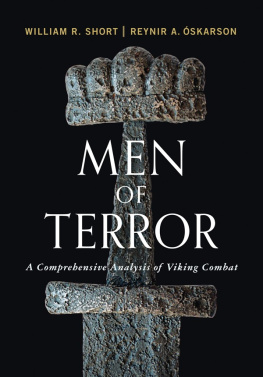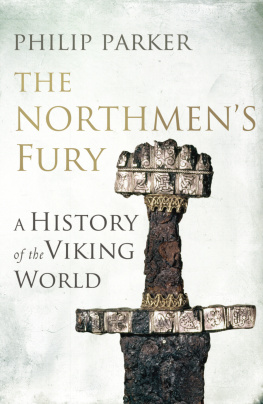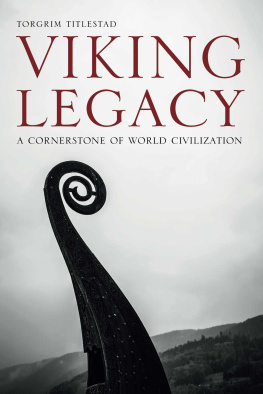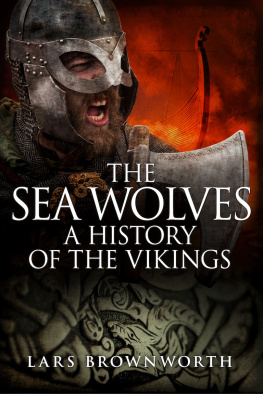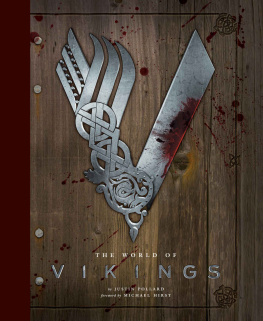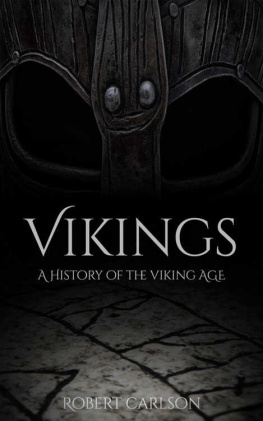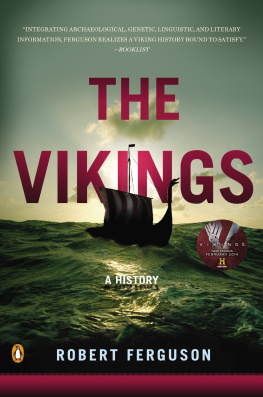The Eaters of the Dead
Publisher: Harper (April 28, 2009)Language: EnglishISBN-10: 0061782637ISBN-13: 978-0061782633
Praise not the day until evening has come; a woman until she is burnt; a sword until it is tried; a maiden until she is married; ice until it has been crossed; beer until it has been drunk.
VIKING PROVERB
Evil is of old date.
ARAB PROVERB
INTRODUCTION
THE IBN FADLAN MANUSCRIPT REPRESENTS THE earliest known eyewitness account of Viking life and society. It is an extraordinary document, describing in vivid detail events which occurred more than a thousand years ago. The manuscript has not, of course, survived intact over that enormous span of time. It has a peculiar history of its own, and one no less remarkable than the text itself.
PROVENANCE OF THE MANUSCRIPT
In June, A.D. 921, the Caliph of Bagdad sent a member of his court, Ahmad Ibn Fadlan, as ambassador to the King of the Bulgars. Ibn Fadlan was gone three years on his journey and never actually accomplished his mission, for along the way he encountered a company of Norsemen and had many adventures among them.
When he finally returned to Bagdad, Ibn Fadlan recorded his experiences in the form of an official report to the court. That original manuscript has long since disappeared, and to reconstruct it we must rely on partial fragments preserved in later sources.
The best-known of these is an Arabic geographical lexicon written by Yakut ibn-Abdallah sometime in the thirteenth century. Yakut includes a dozen verbatim passages from Ibn Fadlans account, which was then three hundred years old. One must presume Yakut worked from a copy of the original. Nevertheless these few paragraphs have been endlessly translated and retranslated by later scholars.
Another fragment was discovered in Russia in 1817 and was published in German by the St. Petersburg Academy in 1823. This material includes certain passages previously published by J. L. Rasmussen in 1814. Rasmussen worked from a manuscript he found in Copenhagen, since lost, and of dubious origins. There were also Swedish, French, and English translations at this time, but they are all notoriously inaccurate and apparently do not include any new material.
In 1878, two new manuscripts were discovered in the private antiquities collection of Sir John Emerson, the British Ambassador in Constantinople. Sir John was apparently one of those avid collectors whose zeal for acquisition exceeded his interest in the particular item acquired. The manuscripts were found after his death; no one knows where he obtained them, or when.
One isa geography in Arabic by Ahmad Tusi, reliably dated at A.D. 1047. This makes the Tusi manuscript chronologically closer than any other to the original of Ibn Fadlan, which was presumably written around A.D. 924-926. Yet scholars regard the Tusi manuscript as the least trustworthy of all the sources; the text is full of obvious errors and internal inconsistencies, and although it quotes at length from one Ibn Faqih who visited the Northcountry , many authorities hesitate to accept this material.
The second manuscript is that of Amin Razi, dating roughly from A.D. 1585-1595. It is written in Latin and according to its author is translated directly from the Arabic text of Ibn Fadlan. The Razi manuscript contains some material about the Oguz Turks, and several passages concerning battles with the mist monsters, not found in other sources.
In 1934, a final text in Medieval Latin was found in the monastery of Xymos, near Thessalonika in northeastern Greece. The Xymos manuscript contains further commentary on Ibn Fadlans relations with the Caliph, and his experiences with the creatures of the Northcountry . The author and date of the Xymos manuscript are both uncertain.
The task of collating these many versions and translations, ranging over more than a thousand years, appearing in Arabic, Latin, German, French, Danish, Swedish, and English, is an undertaking of formidable proportions. Only a person of great erudition and energy would attempt it, and in 1951 such a person did. Per Fraus-Dolos, Professoremeritus of Comparative literature at the Universityof Oslo, Norway, compiled all the known sources and began the massive task of translation which occupied him until his death in 1957. Portions of his new translation were published in theProceedings of the National Museum of Oslo: 1959-1960 , but they did not arouse much scholarly interest, perhaps because the journal has a limited circulation.
The Fraus-Dolos translation was absolutely literal; inhis own introduction to the material, Fraus-Dolos remarked that it is in the nature of languages that a pretty translation is not accurate, and an accurate translation finds its own beauty without help.
In preparing this full and annotated version of the Fraus-Dolos translation, I have made few alterations. I deleted some repetitive passages; these are indicated in the text. I changed paragraph structure, starting each directly quoted speaker with a new paragraph, according to modern convention. I have omitted the diacritical marks on Arabic names. Finally, I have occasionally altered the original syntax, usually by transposing subordinate clauses so that the meaning is more readily grasped.
THE VIKINGS
Ibn Fadlans portrait of the Vikings differs markedly from the traditional European view of these people. The first European descriptions of the Vikings were recorded by the clergy; they were the only observers of the time who could write, and they viewed the pagan Northmen with special horror. Here is a typically hyperbolic passage, cited by D. M. Wilson, from a twelfth-century Irish writer:
In a word, although there were an hundred hard-steeled iron heads on one neck, and an hundred sharp, ready, cool, never rusting, brazen tongues in each head, and an hundred garrulous, loud, unceasing voices from each tongue, they could not recount or narrate, enumerate or tell, what all the Irish suffered in common, both men and women, laity and clergy, old and young, noble and ignoble, of the hardships and of injuring and of oppression, in every house, from those valiant, wrathful, purely pagan people.
Modern scholars recognize that such bloodcurdling accounts of Viking raids are vastly exaggerated. Yet European writers still tend to dismiss the Scandinavians as bloody barbarians, irrelevant to the main flow of Western culture and ideas. Often this has been done at the expense ofa certain logic. For example, David Talbot Rice writes:
From the eighth to the eleventh centuries indeed the role of the Vikings was perhaps more influential than that of any other single ethnic group in Western Europe.... The Vikings were thus great travellers and they performed outstanding feats of navigation; their cities were great centres of trade; their art was original, creative and influential; they boasted a fine literature and a developed culture. Was it truly a civilization? It must, I think, be admitted that it was not.... The touch of humanism which is the hallmark of civilization was absent.
This same attitude is reflected in the opinion of Lord Clark:
When one considers the Icelandic sagas, which are among the great books of the world, one must admit that the Norsemen produced a culture. But was it civilization? ... Civilization means something more than energy and will and creative power: something the early Norsemen hadnt got, but which, even in their time, was beginning to reappear in Western Europe. How can I defineit .? Well, very shortly, a sense of permanence. The wanderers and invaders were in a continual state of flux. They didnt feel the need to look forward beyond the next March or the next voyage or the next battle. And for that reason it didnt occur to them to build stone houses, or to write books.
The more carefully one reads these views, the more illogical they appear. Indeed, one must wonder why highly educated and intelligent European scholars feel so free to dismiss the Vikings with no more than a passing nod.And why the preoccupation with the semantic question of whether the Vikings had a civilization? The situation is explicable only if one recognizes a long-standing European bias, springing from traditional views of European prehistory.

